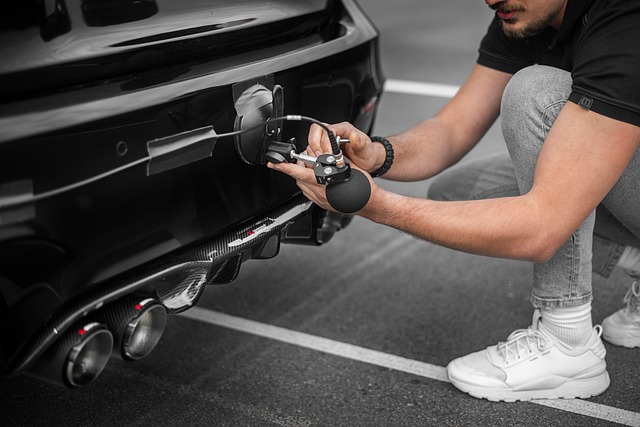Looking to register your car in California? This comprehensive guide breaks down the process step-by-step. From understanding vital requirements to securing necessary documents and even performing a critical VIN verification, this article ensures a smooth registration experience. We’ll walk you through submitting applications, paying fees at the DMV, and receiving your official vehicle registration documents. Master the art of vin verification for a seamless California car registration journey.
- Understand California Vehicle Registration Requirements
- Gather Necessary Documents for Car Registration
- Perform VIN Verification: Steps and Importance
- Submit Application and Pay Fees at DMV
- Receive Your Vehicle Registration Documents
Understand California Vehicle Registration Requirements

Before registering your vehicle in California, it’s crucial to understand the state’s specific requirements for vehicle identification number (VIN) verification. The California Department of Motor Vehicles (DMV) mandates a thorough inspection of a vehicle’s VIN to ensure its authenticity and history. This process is essential to prevent fraud and ensure safety on California roads.
A key aspect of this requirement involves utilizing reliable methods such as a mobile VIN verifier or undergoing a standard VIN inspection. These services help verify the vehicle’s history, including any previous accidents, outstanding recalls, or theft records. By completing these checks, you not only comply with California law but also gain valuable insights into your car’s overall condition and safety features.
Gather Necessary Documents for Car Registration

Before you begin the car registration process in California, make sure you have all the required documents. The list includes your vehicle’s Registration Application (Form DVF 140), a valid driver’s license, proof of insurance, and perhaps most importantly, the Vehicle Identification Number (VIN) verification. This step is crucial as it ensures that your car is genuine and eligible for registration. You’ll need to provide a completed VIN verification form along with a valid mobile vin inspection or mobile vin verifier report.
Additionally, you must have the appropriate fees ready, which can be paid by cash, check, or debit/credit card. Some documents may be required based on your specific situation, such as proof of ownership if buying from a dealership or private seller, so it’s beneficial to double-check with the California Department of Motor Vehicles (DMV) for an up-to-date list of necessary paperwork.
Perform VIN Verification: Steps and Importance

Before you can register your car in California, it’s crucial to perform a Vehicle Identification Number (VIN) verification. This process involves checking the vehicle’s unique VIN to ensure its authenticity and history. You can do this yourself or opt for a mobile vin inspection service, where a specialist comes to you to conduct the check.
The steps for vin inspection are straightforward. First, locate the VIN on your car’s registration documents or the vehicle itself. Then, use an online tool or contact a designated California Department of Motor Vehicles (DMV) office to cross-reference the number. A mobile vin verifier can also assist in this step by providing on-site verification, ensuring a quicker and more convenient process. This verification is essential as it helps prevent fraud, ensures safety, and allows for accurate registration.
Submit Application and Pay Fees at DMV

After gathering all the necessary documents and ensuring your vehicle meets California’s requirements, it’s time to submit your application at the Department of Motor Vehicles (DMV). You’ll need to complete Form SM 481, which is for registering a motor vehicle. Along with your application, you must provide proof of identification, proof of insurance, and pay the registration fees. The DMV offers various payment methods, including cash, credit card, or debit card.
One crucial step before submitting your application is ensuring accurate vin verification. This involves checking the Vehicle Identification Number (VIN) to confirm its authenticity and history. You can do this through a mobile vin inspection or online services that provide detailed vehicle history reports. Once your application is approved, the DMV will issue you a registration certificate and license plate, finalizing the car registration process in California.
Receive Your Vehicle Registration Documents

After completing the registration process, it’s crucial to receive your vehicle’s official registration documents. These typically include a Certificate of Registration and a Vehicle Identification Number (VIN) sticker. The VIN is a unique identifier for your car, which can be verified through a mobile vin verifier or by checking against state records. This step ensures the accuracy of your vehicle’s details and serves as proof of ownership.
To streamline the process, many California residents opt for a mobile vin inspection service, allowing them to verify their VIN online. This modern approach not only saves time but also enhances convenience, especially when dealing with paperwork. Having accurate and up-to-date registration documents is essential, so always double-check your information and keep your records secure.
Registering a car in California involves understanding key requirements, gathering essential documents, and successfully completing a VIN verification process. By following these steps outlined in our article, from preparing necessary paperwork to submitting applications at the DMV, you’ll be well on your way to securing your vehicle’s registration. Remember, proper registration not only complies with state laws but also ensures your car is legally recognized on California’s roads, facilitating smoother driving experiences and access to public services.
